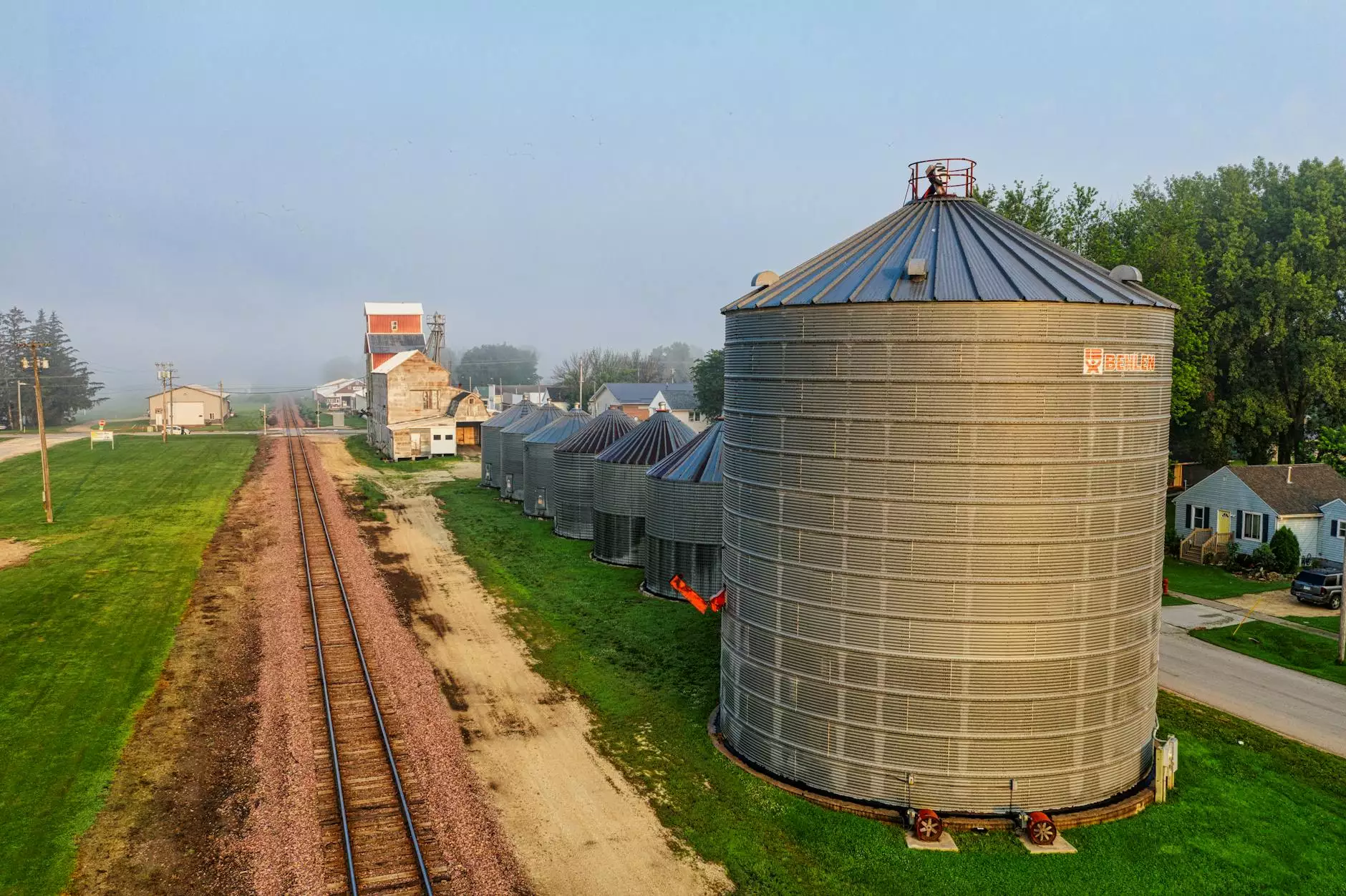Understanding Grain Storage Temperature: A Comprehensive Guide for Farmers

In the agricultural sector, ensuring the proper grain storage temperature is crucial for the longevity and quality of harvested crops. This article delves deep into the importance of maintaining the right temperature for stored grains, explores optimal storage conditions, and provides practical tips for farmers to enhance the shelf-life of their grain products.
The Significance of Grain Storage Temperature
Grain storage is not just about finding a dry place. It’s a science that requires careful consideration of various factors, among them being temperature. Proper grain storage can prevent the growth of mold, the fermentation process, and the activity of insects and pests that threaten the integrity of grains. Here are some vital points regarding the significance of maintaining appropriate temperatures:
- Quality Preservation: Grains stored at optimal temperatures retain their quality, nutritional value, and market price.
- Mold Prevention: Higher temperatures can lead to moisture accumulation, promoting mold growth which can spoil the grain.
- Pest Control: Certain pests thrive in specific temperature ranges. Maintaining a stable temperature can help deter them.
- Long-term Storage: For farmers looking to store grain over extended periods, maintaining ideal temperatures is critical.
Optimal Grain Storage Temperature Ranges
The optimal range for grain storage temperature is typically between 50°F to 60°F (10°C to 15°C). Within this range, grains are less prone to spoilage and pest infestations. Factors that can affect these temperatures include:
- Type of Grain: Different types of grains have varying tolerance levels. For instance, some grains may be more sensitive to heat and humidity than others.
- Moisture Content: Grains with higher moisture content should be stored at lower temperatures to prevent degradation.
- External Climate: The local climate can significantly impact the storage facility’s internal temperature.
Factors Influencing Grain Storage Temperature
Understanding the various factors that influence grain storage temperature allows farmers to implement more effective storage practices. Key factors include:
1. Airflow
Proper ventilation is paramount in controlling the temperature within the storage environment. Ensuring a steady flow of air can help dissipate heat and maintain uniform temperatures throughout the stored grain.
2. Insulation
Well-insulated storage structures can maintain stable temperatures regardless of outside weather conditions. Insulation materials, as well as the design of the storage facility, play a critical role in temperature control.
3. Monitoring Systems
Investing in temperature monitoring systems can help farmers keep a close eye on storage conditions. These systems can alert farmers to any fluctuations in temperature, enabling quick action to avert potential spoilage.
4. Material of Storage Containers
The type of storage containers used can influence temperature regulation. Metal containers, for instance, may heat up more quickly than wooden or insulated options. Choosing the right material can make a significant difference in maintaining a steady temperature.
Best Practices for Maintaining Ideal Temperature Conditions
Here are some practical tips that farmers can use to maintain ideal grain storage temperature:
1. Regular Temperature Checks
Implement a schedule for regular monitoring of storage temperature. Use thermometers and moisture meters periodically to assess conditions accurately.
2. Control Humidity Levels
Humidity has a direct impact on temperature and grain quality. Use dehumidifiers if necessary to maintain a low humidity level within the storage environment.
3. Keep Storage Clean
Regularly clean storage areas to prevent the growth of mold and pests. A clean environment contributes greatly to maintaining stable temperatures.
4. Load and Unload Strategically
When adding or removing grain from storage, plan appropriately to minimize temperature fluctuations. Unload cooler grain before hotter grain to maintain uniform temperature levels.
The Role of Technology in Grain Storage
Modern advancements in technology are revolutionizing grain storage. Here are some of the most impactful technologies:
- Automated Monitoring Systems: Using IoT (Internet of Things) devices, farmers can now track temperature, humidity, and even pest activity remotely.
- Smart Ventilation Systems: These systems help automatically control airflow based on real-time external and internal temperature data.
- Data Analytics: Advanced data analytics can help farmers predict temperature changes based on historical data, allowing for preemptive actions.
Understanding Grain Quality Parameters
Aside from temperature, several quality parameters impact how well grains perform during storage. These include:
1. Moisture Content
The moisture content of grains directly influences their shelf-life. Typically, a moisture content of 13% or less is recommended for most grains.
2. Temperature Control
As discussed, temperature is crucial. Maintaining it within the optimal range helps control moisture levels and inhibits mold.
3. Cleanliness
Ensuring that grains are clean before storage is essential, as impurities can lead to a decline in grain quality over time.
The Consequences of Neglecting Grain Storage Temperature
Failing to maintain the correct grain storage temperature can lead to devastating consequences:
- Increased Spoilage: Improperly stored grains are prone to spoilage, leading to significant financial losses for farmers.
- Pest Infestation: High or fluctuating temperatures can attract pests, leading to contamination and food safety issues.
- Decreased Market Value: Grain that doesn’t meet quality standards can decrease in marketability and fetch a lower price.
Future Trends in Grain Storage Technology
The future of grain storage is poised for even more innovation. Anticipated advancements include enhanced AI-based systems for monitoring and predicting storage conditions, as well as more sophisticated pest-management techniques that rely on data analytics.
Conclusion
Understanding and managing grain storage temperature is an essential skill for modern farmers. By investing in technology, adopting best practices, and being vigilant about storage conditions, farmers can ensure that their crops remain safe, profitable, and of the highest quality. The knowledge gleaned from this guide is instrumental in helping farmers navigate the multifaceted challenges associated with grain storage, thereby maximizing yield and sustainability in agriculture.
For more tips and advice on Farm Equipment Repair and Farming Equipment, visit us at tsgcinc.com.








